I'm using lambda code in python to update the dynamo db created by Amplify sam template graphgl
I set a subscription On Update Listener and it works as long as the changes to the data is done through the Amplify app, but when I change the data from the external lambda it doesn't trigger the event and the app doesn't update
I tried to follow this: How to send a GraphQL query to AppSync from python?
It seems like a good approach but I'm getting
{
"data": {
"listBillings": null
},
"errors": [
{
"path": [
"listBillings"
],
"data": null,
"errorType": "Unauthorized",
"errorInfo": null,
"locations": [
{
"line": 2,
"column": 3,
"sourceName": null
}
],
"message": "Not Authorized to access listBillings on type ModelBillingConnection"
}
]
}
even though I assign the user with all AppSync permissions:
I also tried to create a custom policy
{
"Version": "2012-10-17",
"Statement": [
{
"Sid": "VisualEditor0",
"Effect": "Allow",
"Action": "appsync:*",
"Resource": "*"
}
]
}
App code:
/* subscribe to update */
this.subscription = this.api
.OnUpdateSumitPaymentListener()
.subscribe((event: any) => {
this.getTokenAndCalc();
});
graphql:
type SumitPayment @model @searchable
@auth(rules: [
{ allow: owner }
{ allow: groups, groups: ["admin"] }
])
{
id: ID!
status: String
OGCustomerID: String
OGPaymentID: String
OGPaymentType: String
OGDocumentNumber: String
subscriptionPrice: Float
owner: String
documentDownloadURL: String
}
Lambda:
dynamo = boto3.resource('dynamodb')
dbTable = dynamo.Table(tableName)
keys = {'id': id}
dbTable.update_item(
Key=keys,
UpdateExpression="SET #key = :val",
ExpressionAttributeValues={
':val': value,
},
ExpressionAttributeNames={
"#key": key
}
I tried to follow this https://aws.amazon.com/premiumsupport/knowledge-center/appsync-notify-subscribers-real-time/
but it didn't make any sense, and also the Resolver in my case is completely different:
/**
* These are available AWS AppSync utilities that you can use in your request and response handler.
* For more information about the utilities that are currently implemented, see
* https://docs.aws.amazon.com/en_us/appsync/latest/devguide/resolver-reference-overview-js.html#utility-resolvers.
*/
import {util} from '@aws-appsync/utils';
/**
* This function is invoked before the request handler of the first AppSync function in the pipeline.
* The resolver request handler allows you to perform some preparation logic
* before executing the defined functions in your pipeline.
* @param ctx - Contextual information for your resolver invocation
*/
export function request(ctx) {
return {};
}
/**
* Pipeline functions exhibit the following behaviors:
* 1) Between your request and response handler, the functions of your pipeline resolver will run in sequence.
* 2) The resolver's request handler result is made available to the first function as ctx.prev.result.
* 3) Each function's response handler result is available to the next function as ctx.prev.result.
*/
/**
* This function is invoked after the response handler of the last AppSync function in the pipeline.
* The resolver response handler allows you to perform some final evaluation logic
* from the output of the last function to the expected GraphQL field type.
* @param ctx - Contextual information for your resolver invocation.
*/
export function response(ctx) {
return ctx.prev.result;
}
I don't understand the None data source and how u should use it
I don't think it is correct to change things from the console when u work with SAM CLI because it will override the changes
And in the end of the tutorial he just show the same example from the beginning - that was already working, so I didn't understand what was the point of the tutorial.

